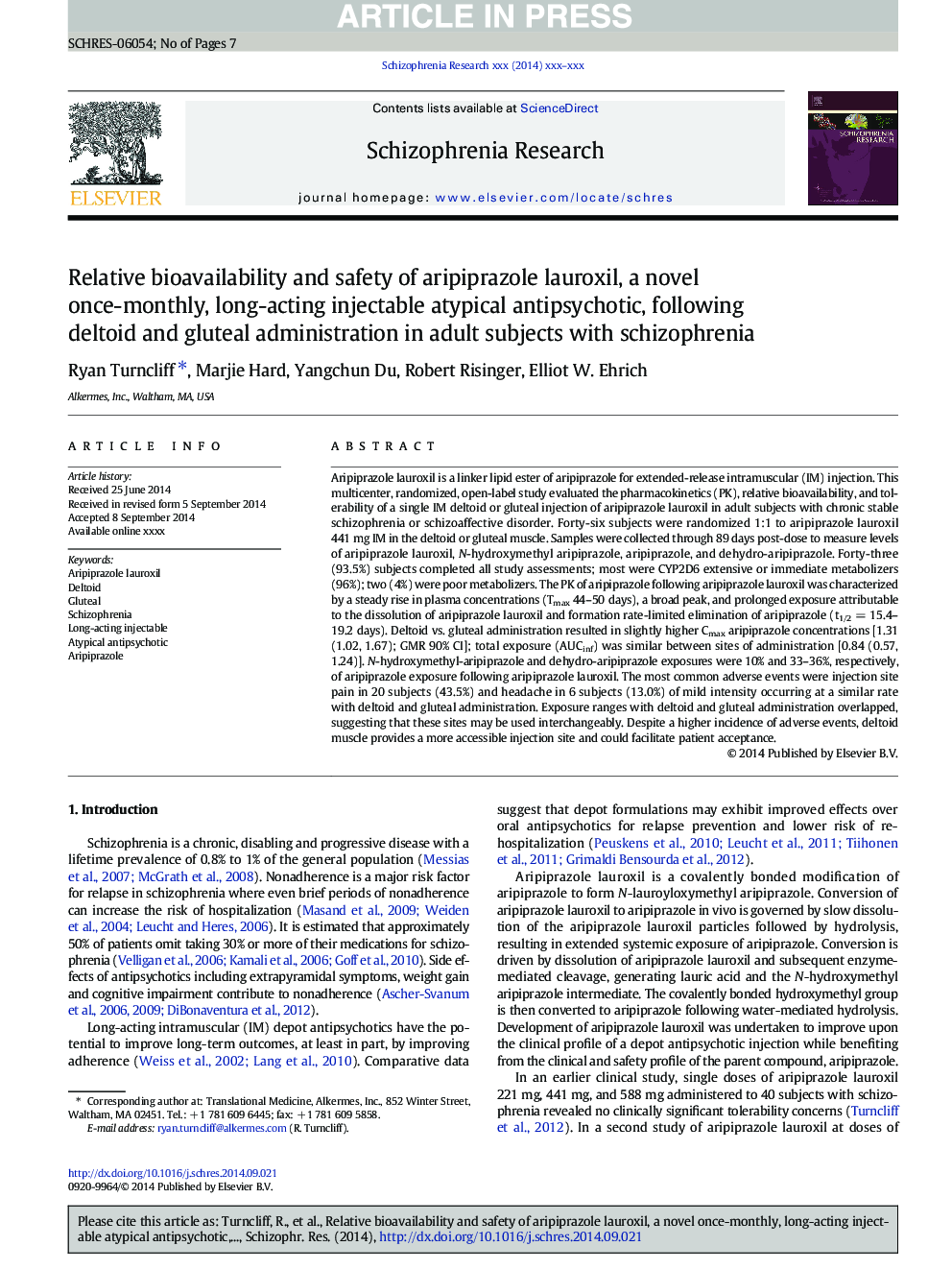| Article ID | Journal | Published Year | Pages | File Type |
|---|---|---|---|---|
| 6824724 | Schizophrenia Research | 2014 | 7 Pages |
Abstract
Aripiprazole lauroxil is a linker lipid ester of aripiprazole for extended-release intramuscular (IM) injection. This multicenter, randomized, open-label study evaluated the pharmacokinetics (PK), relative bioavailability, and tolerability of a single IM deltoid or gluteal injection of aripiprazole lauroxil in adult subjects with chronic stable schizophrenia or schizoaffective disorder. Forty-six subjects were randomized 1:1 to aripiprazole lauroxil 441Â mg IM in the deltoid or gluteal muscle. Samples were collected through 89Â days post-dose to measure levels of aripiprazole lauroxil, N-hydroxymethyl aripiprazole, aripiprazole, and dehydro-aripiprazole. Forty-three (93.5%) subjects completed all study assessments; most were CYP2D6 extensive or immediate metabolizers (96%); two (4%) were poor metabolizers. The PK of aripiprazole following aripiprazole lauroxil was characterized by a steady rise in plasma concentrations (Tmax 44-50Â days), a broad peak, and prolonged exposure attributable to the dissolution of aripiprazole lauroxil and formation rate-limited elimination of aripiprazole (t1/2Â =Â 15.4-19.2Â days). Deltoid vs. gluteal administration resulted in slightly higher Cmax aripiprazole concentrations [1.31 (1.02, 1.67); GMR 90% CI]; total exposure (AUCinf) was similar between sites of administration [0.84 (0.57, 1.24)]. N-hydroxymethyl-aripiprazole and dehydro-aripiprazole exposures were 10% and 33-36%, respectively, of aripiprazole exposure following aripiprazole lauroxil. The most common adverse events were injection site pain in 20 subjects (43.5%) and headache in 6 subjects (13.0%) of mild intensity occurring at a similar rate with deltoid and gluteal administration. Exposure ranges with deltoid and gluteal administration overlapped, suggesting that these sites may be used interchangeably. Despite a higher incidence of adverse events, deltoid muscle provides a more accessible injection site and could facilitate patient acceptance.
Keywords
Related Topics
Life Sciences
Neuroscience
Behavioral Neuroscience
Authors
Ryan Turncliff, Marjie Hard, Yangchun Du, Robert Risinger, Elliot W. Ehrich,
